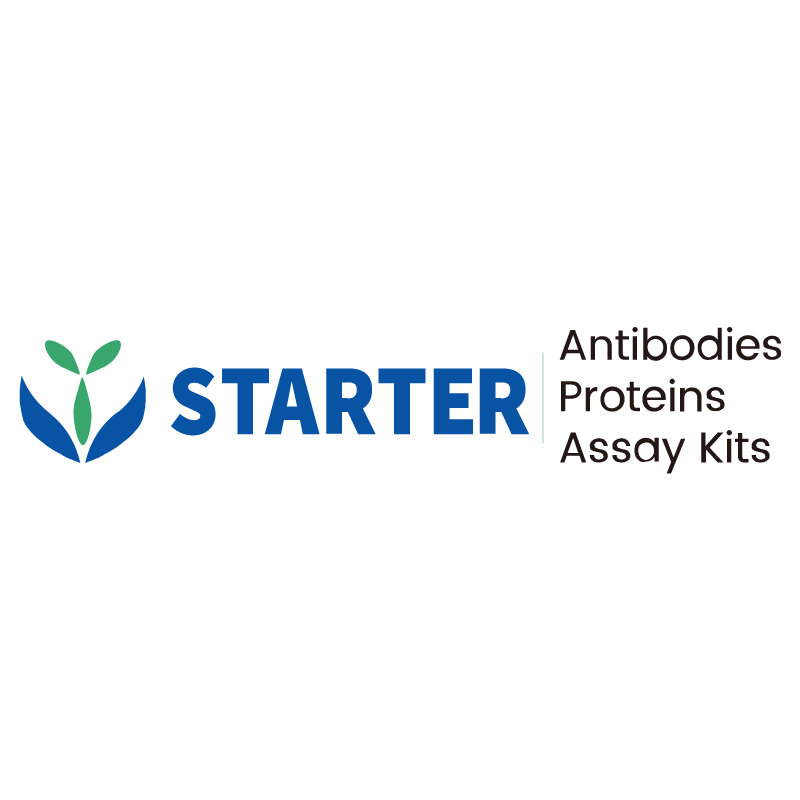WB result of beta Galactosidase/GLB1 Recombinant Rabbit mAb
Primary antibody: beta Galactosidase/GLB1 Recombinant Rabbit mAb at 1/1000 dilution
Lane 1: Daudi whole cell lysate 20 µg
Lane 2: SK-BR-3 whole cell lysate 20 µg
Lane 3: MCF7 whole cell lysate 20 µg
Lane 4: Saos-2 whole cell lysate 20 µg
Lane 5: U-87 MG whole cell lysate 20 µg
Lane 6: SH-SY5Y whole cell lysate 20 µg
Low expression control: Daudi whole cell lysate
Secondary antibody: Goat Anti-rabbit IgG, (H+L), HRP conjugated at 1/10000 dilution
Predicted MW: 76 kDa
Observed MW: 65 kDa
Product Details
Product Details
Product Specification
| Host | Rabbit |
| Antigen | beta Galactosidase/GLB1 |
| Synonyms | Beta-galactosidase; Acid beta-galactosidase (Lactase); Elastin receptor 1; ELNR1 |
| Immunogen | Recombinant Protein |
| Location | Cytoplasm, Lysosome |
| Accession | P16278 |
| Clone Number | S-2295-7 |
| Antibody Type | Recombinant mAb |
| Isotype | IgG |
| Application | WB, IHC-P |
| Reactivity | Hu |
| Positive Sample | SK-BR-3, MCF7, Saos-2, U-87 MG, SH-SY5Y |
| Purification | Protein A |
| Concentration | 0.5 mg/ml |
| Conjugation | Unconjugated |
| Physical Appearance | Liquid |
| Storage Buffer | PBS, 40% Glycerol, 0.05% BSA, 0.03% Proclin 300 |
| Stability & Storage | 12 months from date of receipt / reconstitution, -20 °C as supplied |
Dilution
| application | dilution | species |
| WB | 1:1000 | Hu |
| IHC-P | 1:500 | Hu, Ms, Rt |
Background
Beta-galactosidase (GLB1) is an essential lysosomal enzyme responsible for the hydrolysis of terminal galactose residues in glycolipids and glycoproteins. This enzyme plays a crucial role in the degradation and recycling of complex molecules within cells. Deficiencies or mutations in the GLB1 gene can lead to the accumulation of undigested substrates in lysosomes, resulting in severe genetic disorders such as GM1 gangliosidosis and Morquio B syndrome. These conditions are characterized by progressive neurological and skeletal abnormalities due to the impaired breakdown of specific glycosphingolipids and glycoproteins.
Picture
Picture
Western Blot
Immunohistochemistry
IHC shows positive staining in paraffin-embedded human kidney. Anti-beta Galactosidase/GLB1 antibody was used at 1/500 dilution, followed by a HRP Polymer for Mouse & Rabbit IgG (ready to use). Counterstained with hematoxylin. Heat mediated antigen retrieval with Tris/EDTA buffer pH9.0 was performed before commencing with IHC staining protocol.
IHC shows positive staining in paraffin-embedded human liver. Anti-beta Galactosidase/GLB1 antibody was used at 1/500 dilution, followed by a HRP Polymer for Mouse & Rabbit IgG (ready to use). Counterstained with hematoxylin. Heat mediated antigen retrieval with Tris/EDTA buffer pH9.0 was performed before commencing with IHC staining protocol.
IHC shows positive staining in paraffin-embedded human hepatocellular carcinoma. Anti-beta Galactosidase/GLB1 antibody was used at 1/500 dilution, followed by a HRP Polymer for Mouse & Rabbit IgG (ready to use). Counterstained with hematoxylin. Heat mediated antigen retrieval with Tris/EDTA buffer pH9.0 was performed before commencing with IHC staining protocol.
IHC shows positive staining in paraffin-embedded human lung adenocarcinoma. Anti-beta Galactosidase/GLB1 antibody was used at 1/500 dilution, followed by a HRP Polymer for Mouse & Rabbit IgG (ready to use). Counterstained with hematoxylin. Heat mediated antigen retrieval with Tris/EDTA buffer pH9.0 was performed before commencing with IHC staining protocol.
IHC shows positive staining in paraffin-embedded mouse kidney. Anti-beta Galactosidase/GLB1 antibody was used at 1/500 dilution, followed by a HRP Polymer for Mouse & Rabbit IgG (ready to use). Counterstained with hematoxylin. Heat mediated antigen retrieval with Tris/EDTA buffer pH9.0 was performed before commencing with IHC staining protocol.
IHC shows positive staining in paraffin-embedded rat kidney. Anti-beta Galactosidase/GLB1 antibody was used at 1/500 dilution, followed by a HRP Polymer for Mouse & Rabbit IgG (ready to use). Counterstained with hematoxylin. Heat mediated antigen retrieval with Tris/EDTA buffer pH9.0 was performed before commencing with IHC staining protocol.


